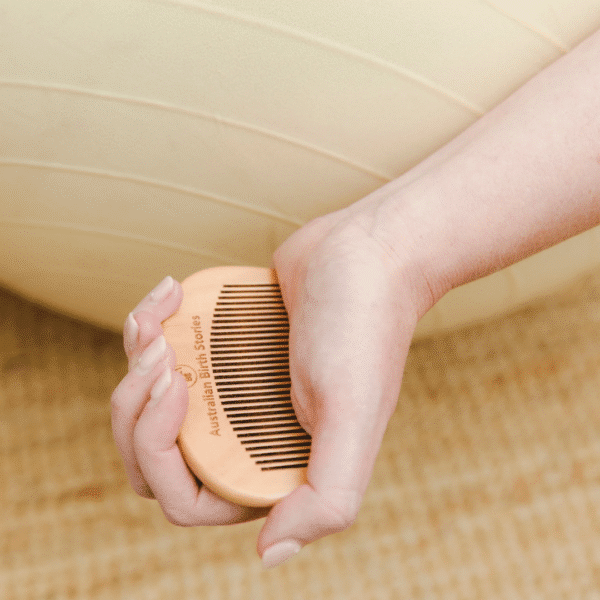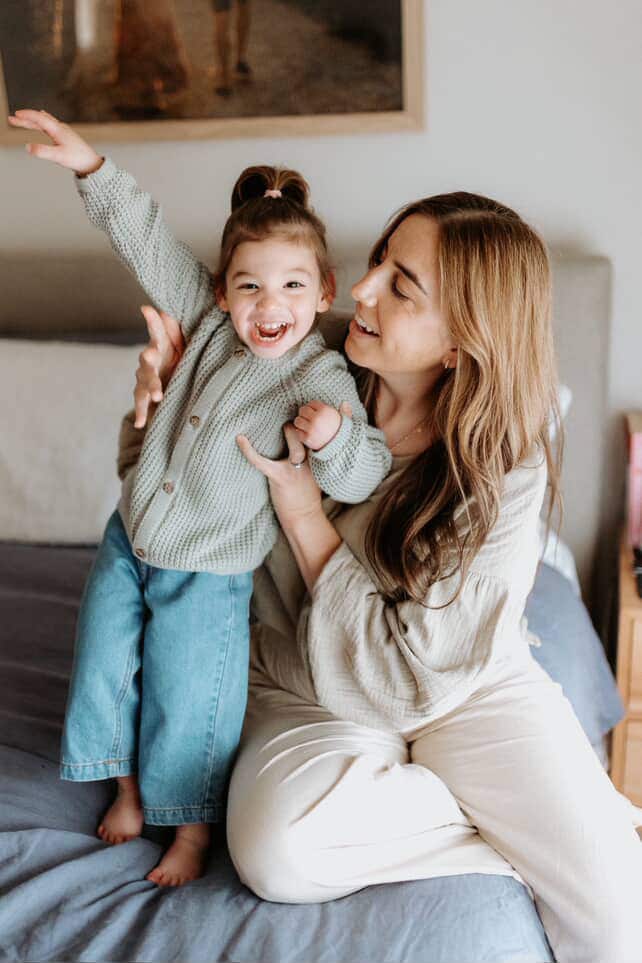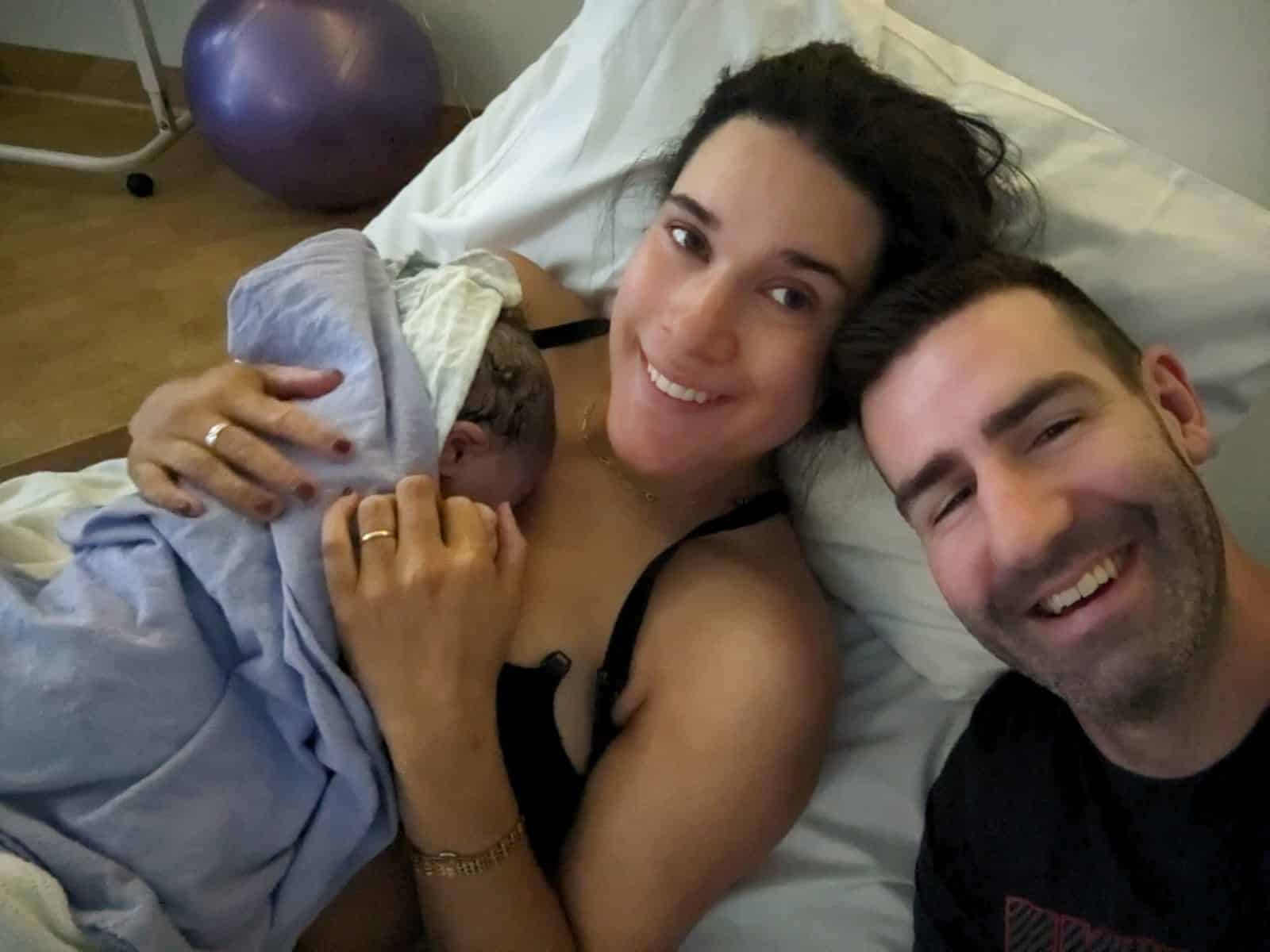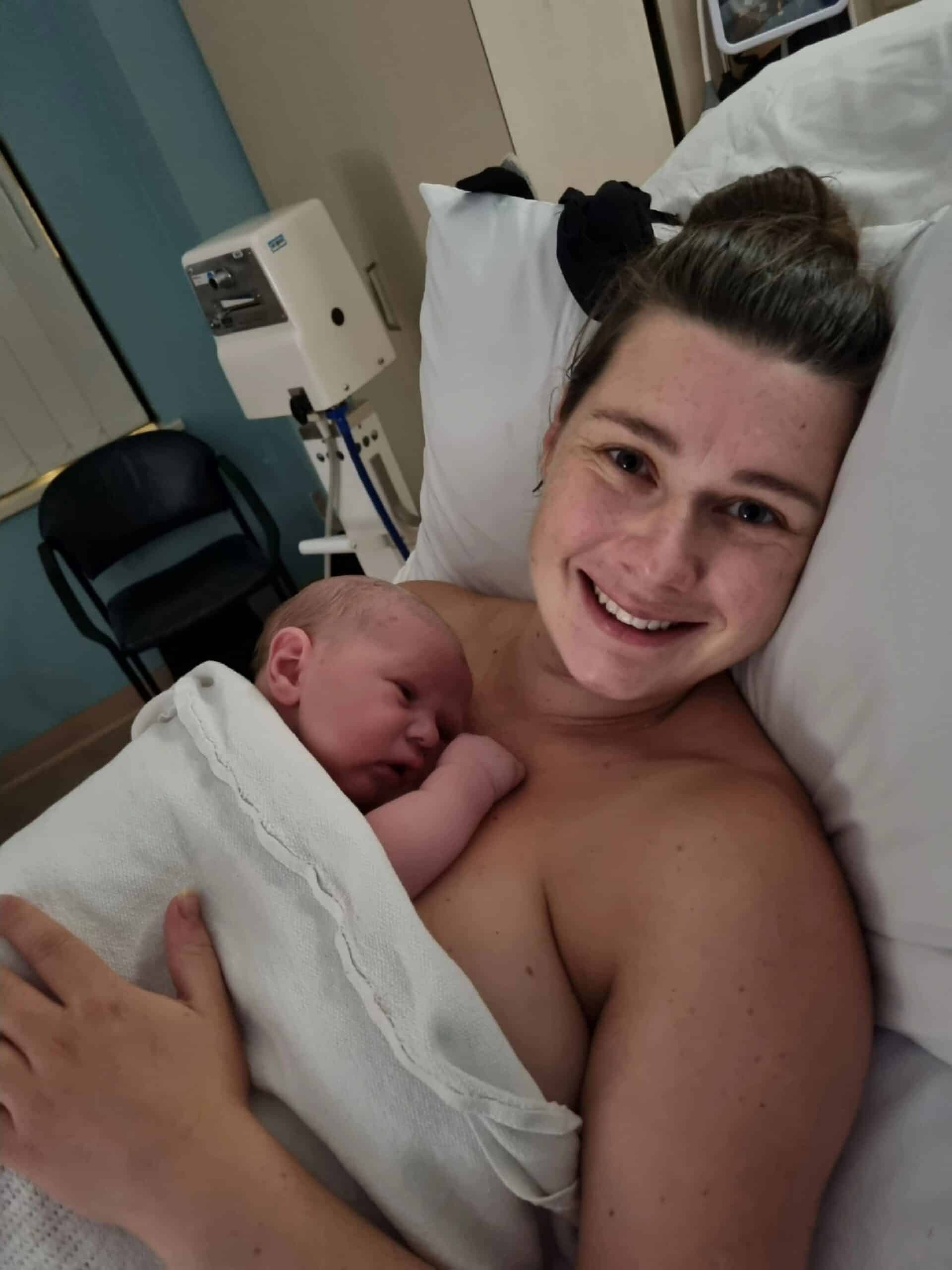Podcasts Nat
EPISODE 251
Nat

“I was 17 when I first had gynecological issues; I had a 25 x 17 cm ovarian tumour removed so from then I knew that having children was always going to be a struggle. I set myself a timeframe in my head, and instead of waiting till 35 like a lot of women do, I decided I would reassess having kids when I turned 30. By then I hadn’t met anyone so by 32 I was doing all the appointments. Some people were surprised and others weren’t even remotely surprised. I was nervous telling my parents; my mum isn’t terribly religious but I was nervous about not creating a family in the traditional sense. That said, their support has been incredible throughout the last two-and-a-half years.”
When Nat first saw Monash IVF they were the only clinic with a sperm clinic. She found a fertility specialist and after a slew of tests discovered that her AMH levels were lower than expected. Instead of doing two rounds of IUI (standard procedure with a sperm donor), Nat went straight to IVF.
“I got myself debt free before I started IVF; I had no consumer debt, no credit card debt, no HECS so when I got two embryos that the specialists didn’t think were good quality, it was devastating. It felt like it was $13,000 wasted. It was controversial but they decided to put both embryos in and I fell pregnant but it was a heterotopic pregnancy; one in the uterus and one in the fallopian tube. The one in the fallopian tube had actually split with identical twins so at one stage I was pregnant with triplets.”
Nat had surgery to remove the fallopian tube and the pregnancy while trying to save the pregnancy in the uterus but I ended up miscarrying a few weeks later. It was a really challenging time and she decided to change fertility specialists in the hope that a new set of protocols would work in her favour. Three months later with a different fertility specialist, different sperm donor and different medication, Nat ended up with six embryos as they were much better quality than her first and were able to be frozen.
“The first one that was transferred ended up being Harry. I was constantly doing underwear checks and I went to the bathroom at six weeks and there was blood everywhere. The hospital I went to had an early bleeding in pregnancy unit; I ended up being diagnosed with a subchorionic hemorrhage and I had six more bleeds but thankfully they stopped at 16 weeks. It’s a huge blood clot sitting next to the placenta, it’s common for IVF pregnancies and it’s really easy to think that you’re miscarrying but the nurse at the unit told me that every bleed I have would be the hemorrhage.”
Nat’s pregnancy wasn’t easy; she had mild hyperemesis (HG) and vomited every day, she required three iron infusions and continued working despite the aches and pains and the general malaise of constant nausea. She’s the first to admit that most of the challenge was mental, not physical.
“I was uptight the entire time; I was convinced this baby was not coming home with me. There’s a lot of women that just don’t breathe until birth and my anxiety definitely increased in the week before birth. Harry had reduced movements; he was a strong baby but his movements would just stop for 12 hours at a time. They did a lot of tests and decided to induce me but after a few stretches and sweeps I was already 4cm so instead of needing a balloon catheter I had my waters broken and then I went straight on the syntocinon drip.
“I was blown away by how uncomfortable I was. I went so silent that no one knew what was happening but after a few hours I turned to the midwife and asked for the epidural and I loved it; I could finally think and felt like I could really do it. A few hours later, at the shift changeover, they checked me and I was fully dilated so they left me for another hour so he could descend and then I pushed him out in six pushes. His apgar scores were really good and we were discharged the following day.”
Unfortunately, they were back in hospital 36 hours later. A community midwife noticed something wasn’t quite right with Harry’s breathing so once in hospital a slew of tests were performed and Nat was told he had Transient tachypnea of the newborn (TTN) and sepsis. He was treated with antibiotics for six days before returning home.
Harry had just turned one when Nat fell pregnant with Hudson. Everything was tracking well until she received the results of the NIPT test
“The genetic counsellor introduced herself on the phone and told me that he had at 87.5% chance of having trisomy 13, which is incompatible with life. That’s when everything changed; I was heartbroken. The next steps involved a lot of waiting – 7 weeks of waiting. When you get a number that high, there’s a high chance of baby having it fully, which means he would pass away within 72 hours of birth but there were other instances, including partial trisomy 13, a different kind of genetic issue, a false positive or trisomy 13 present in the placenta but not in the baby.
“I had my 13 week scan with a well known obstetrician and everything was reassuring but he was showing soft markers for down syndrome. Between receiving the results at 11 weeks and getting the amnio at 17, they prep you really well. I had hour-long genetic counselling sessions where they would go through all of my options where they went through every possible outcome. They also went through medical termination with me and the thing that shocked me the most was that by the time I found out the results, it was a medical termination by birth. I got really angry at the way the rules were made, that I couldn’t register his birth till 20 weeks, even if he was born at 19 weeks and six days. There was a conversation early on in the piece and I was offered a termination but I didn’t want that….I wanted to grow him for as long as I could and if he felt like he wanted to leave this earth at any stage, he could make that choice. There’s no difference to my grieving process whether it’s at 20 weeks or 35 weeks; I’ve still lost him.
“The medical team I had was amazing, they were all so supportive. I went into the complex care unit and I was only seen by very experienced doctors and they were onto everything. I had the amnio at 17 weeks and within 36 hours the results were in; it looked like he didn’t have trisomy 13. Two weeks later the detailed results showed that he didn’t have it but the placenta did have it. I was 1 in 300,000 that ended up with trisomy 13 in my placenta but not in my baby. There was a risk that the placenta would fail which was an odd thought process to have so I went on aspirin to prevent preeclampsia and we kept a close eye on his growth, where he was tracking in the 98th percentile.
Nat went into preterm labour at 34 weeks and continued having contractions till 39 weeks. On her birthday she felt particularly bad and took herself to hospital where her doctors discovered she had preeclampsia. Ninety minutes later she was in theatre being prepped for a caesarean.
“I was considered a category two caesarean. There were two anaesthetists, two midwives, two pediatricians and two obstetricians. He was 4.6kg and 55cm long so I probably would have struggled pushing him out. His apgars were really good and his heart did have ectopic beats but they were happy to just monitor him.
“The TTN that happened with Harry happened with Hudson, even though there’s a one to two percent chance of it happening. Hudson was treated for sepsis and it resolved quickly, it was like deja vu. There were three distinct rhythms to his heart so they got the Monash heart doctor involved and she acted on what I was telling her. His heart was going into that VT rhythm which is life threatening so he’s on medication for that three times a day. An early brain scan also showed that he may have had a stroke during pregnancy and he is already delayed in his milestones. He has health concerns but I’m going to nurture him and love him, I’m fighting for him every day.”

Topics Discussed
Amniocentesis, Endometriosis, IVF, NIPT, Preterm labour, Solo parent by choice, Trisomy 13
Episode Sponsor
Today’s episode is brought to you by DockATot. This multi award-winning baby lounger is uniquely shaped to recreate a womblike environment to soothe and settle your baby. The DockATot has thousands of 5-star reviews from parents across the world who’ve enjoyed its calming effects on their babies. New parents often say the DockATot is like having an extra set of hands always at the ready because it offers baby a safe place to rest or play wherever you are. Being lightweight and portable, the DockATot can be used around the house and is also perfect for family adventures to the park, beach or beyond.
Handmade in Europe from premium quality materials, the DockATot has become an absolute global parenting must-have. So if you’d love an extra set of hands around the house to help you as a new parent, check out DockATot.com.au and as an ABS listener you can enjoy 10% off any DockATot and their amazing range of accessories. Just enter the code ‘ABS10’ at checkout.
Categories
Related Products
-
Birth Combs: Harness Your Body’s Natural Pain Relief
$24.95Crafted from smooth, natural wood, our birth combs activate specific pressure points in your hands that trigger your body’s innate pain-relieving responses.
Join the conversation
Sign up to get the latest updates, freebies, podcast releases straight into your inbox
@AustralianBirthStories
Follow along with us
@AustralianBirthStories
Follow along with us
@AustralianBirthStories
Follow along with us
@AustralianBirthStories
Follow along with us
@AustralianBirthStories
Follow along with us
@AustralianBirthStories
Follow along with us
@AustralianBirthStories
Follow along with us
@AustralianBirthStories
Follow along with us
@AustralianBirthStories
Follow along with us
@AustralianBirthStories
Follow along with us
@AustralianBirthStories
Follow along with us
@AustralianBirthStories
Follow along with us






